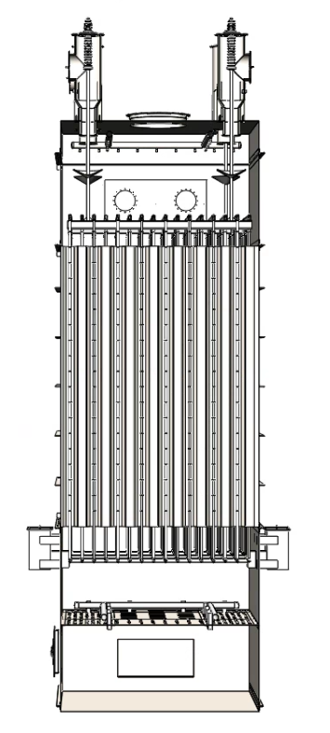
Applications
Used in industries such as power generation, cement production, steel manufacturing, and chemical processing. These systems efficiently remove particulate matter from flue gases, ensuring compliance with air quality standards.
Benefits
Industrial ESP systems provide highly efficient removal of particulate matter, significantly reducing emissions and improving air quality. They enhance the operational efficiency of industrial processes by reducing wear and tear on downstream equipment. ESP systems have low operational costs, are capable of handling large volumes of gas, and are effective for a wide range of particle sizes.
Capacities
Air Flow Rates: 1,000 to over 1,000,000 cfm
Particle Removal Efficiency: Up to 99.9%
Voltage: Typically operates at 20,000 to 100,000 volts DC
Industrial electrostatic precipitator systems use electrostatic forces to remove particulate matter from flue gases. The gas stream passes through an ionization zone where particles are electrically charged. These charged particles then move toward collector plates of opposite charge, where they adhere and form a dust layer. Periodically, the collector plates are cleaned, either by rapping or washing, to remove the accumulated dust, which is then collected for disposal or recycling. The cleaned gas stream is released from the system, ensuring minimal particulate emissions. The ESP system’s design includes high-voltage power supplies, control systems for maintaining optimal operating conditions, and efficient dust removal mechanisms to ensure continuous and effective operations.
Related Systems
Please see the Scrubbing and Containment Systems page for a list of the related systems.
Contact us for more information or to discuss your application and receive an estimate.
